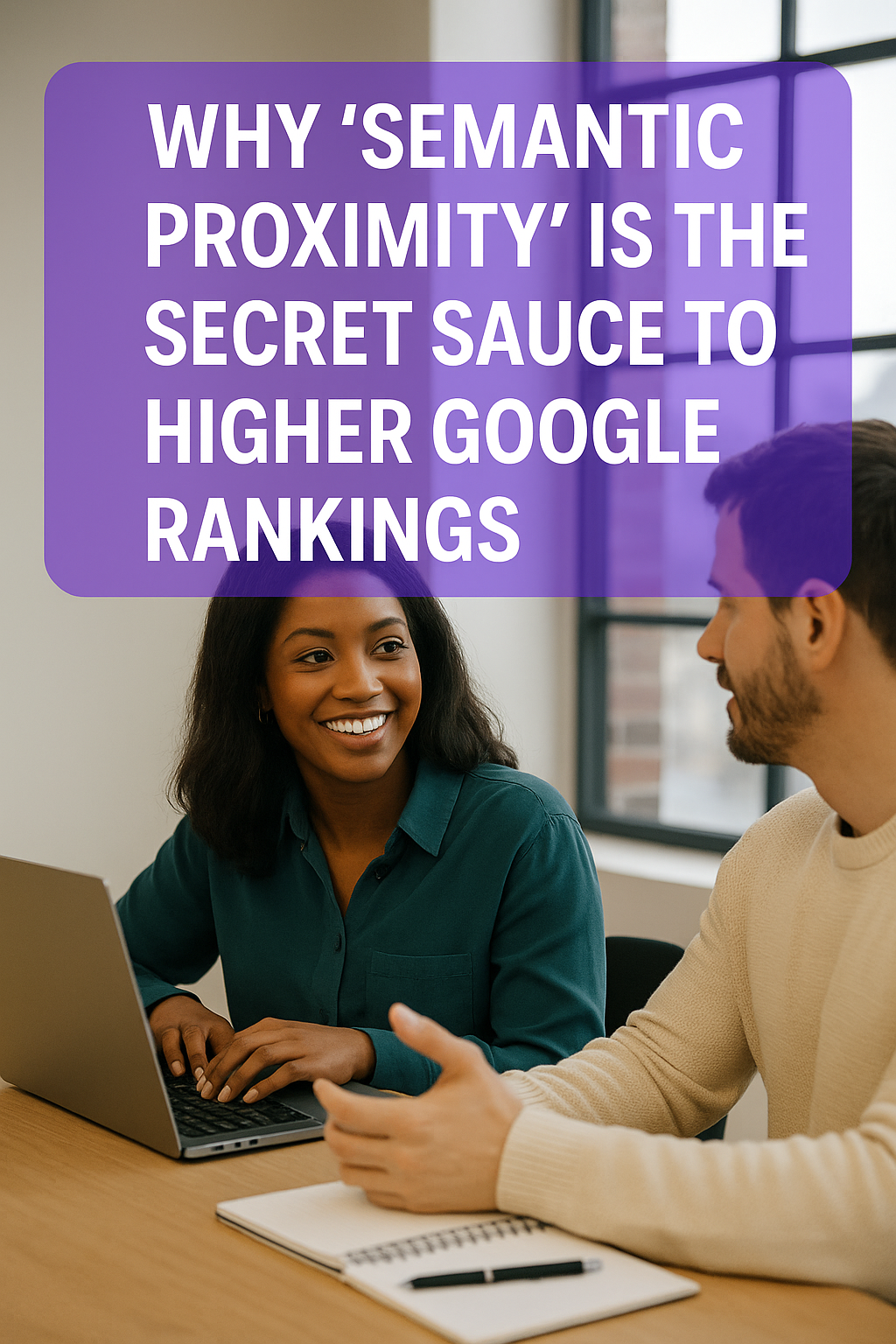📈 Why “Semantic Proximity” Is the Secret Sauce to Higher Google Rankings
Search engine optimization (SEO) is no longer just about using the right keywords—it’s about using the right words together. That’s where semantic proximity comes in. It refers to how closely related words and phrases appear in your content—and it plays a major role in how Google understands what your page is really about.
Let’s break this down in simple terms and see how it can help your website rank higher.
🧠 From Keyword Stuffing to Smart Context
Gone are the days when you could rank high by stuffing your page with exact-match keywords. Google has evolved. Thanks to advanced Natural Language Processing (NLP) models like BERT and MUM, it can now understand the meaning, tone, and relationships between words.
Instead of focusing only on keywords like “healthy breakfast,” Google now looks at how well your content covers related concepts—such as:
- “morning energy boosters”
- “oatmeal recipes”
- “coffee alternatives”
- “light exercise routines”
When these related phrases appear naturally in your content and support the main topic, Google sees your page as more contextually relevant.
🧩 What Exactly Is Semantic Proximity?
Semantic proximity measures how closely related terms appear to each other within a page. For example:
A page that talks about “plant-based diets,” “vegan recipes,” and “meat substitutes” within the same paragraph shows strong semantic proximity.
This signals to Google that the page provides comprehensive, in-depth information, improving its chances of ranking for multiple related queries.
📊 Real-World Example
Suppose you’re writing a blog titled “How to Wake Up Energized Without Caffeine.”
A keyword-focused article might overuse “wake up energized.” But a semantic-rich article would include:
- Natural phrases like “coffee-free morning tips”
- “Benefits of cold showers”
- “Energy-boosting breathing exercises”
This broader context not only helps readers, but also aligns with how Google now processes and ranks content.
🔍 Google’s Own Patents Back It Up
our Attractive Heading
Google holds patents (like US9449105B1) that describe how it uses context and word co-occurrence to better understand content. The idea is simple: if certain terms appear together in trusted sources, and your page mirrors that, it signals authority and relevance.
✅ How to Use Semantic Proximity in Your Content
Here are a few actionable tips:
- Do Topic Research, Not Just Keyword Research
Think about what related questions or terms your audience might look for. - Group Related Phrases Together
Keep semantically linked ideas close within your paragraphs. - Write for People, Not Just Google
Natural language and logical flow are key—avoid robotic writing. - Use Tools Like Google’s “People Also Ask”
These are great sources of related queries you can include.
🚀 Final Thoughts
If you want your pages to rank higher in today’s SEO landscape, it’s time to move beyond keywords and embrace semantic proximity. By naturally incorporating related terms and covering your topic in a more holistic way, you’re giving both your readers and Google exactly what they want.
